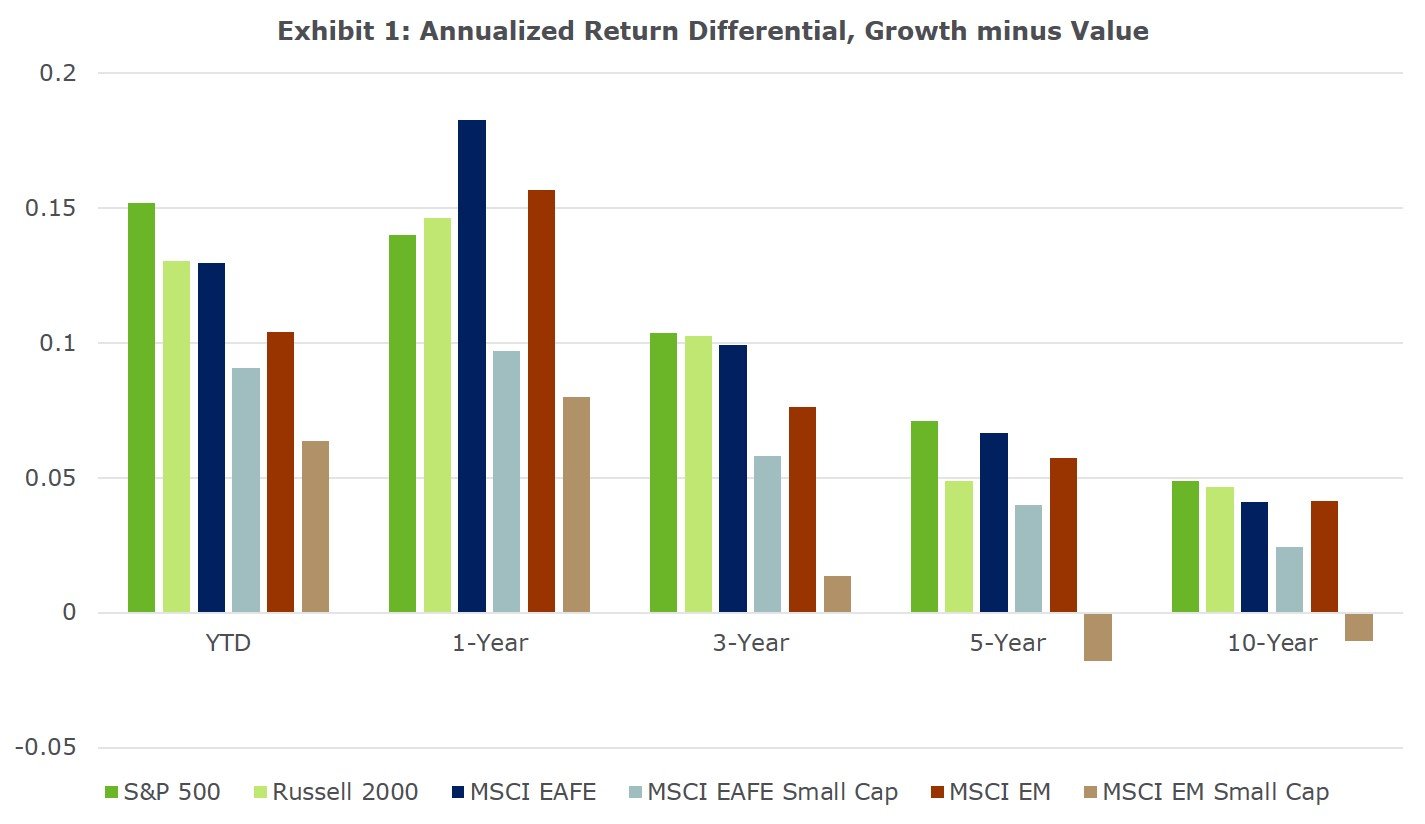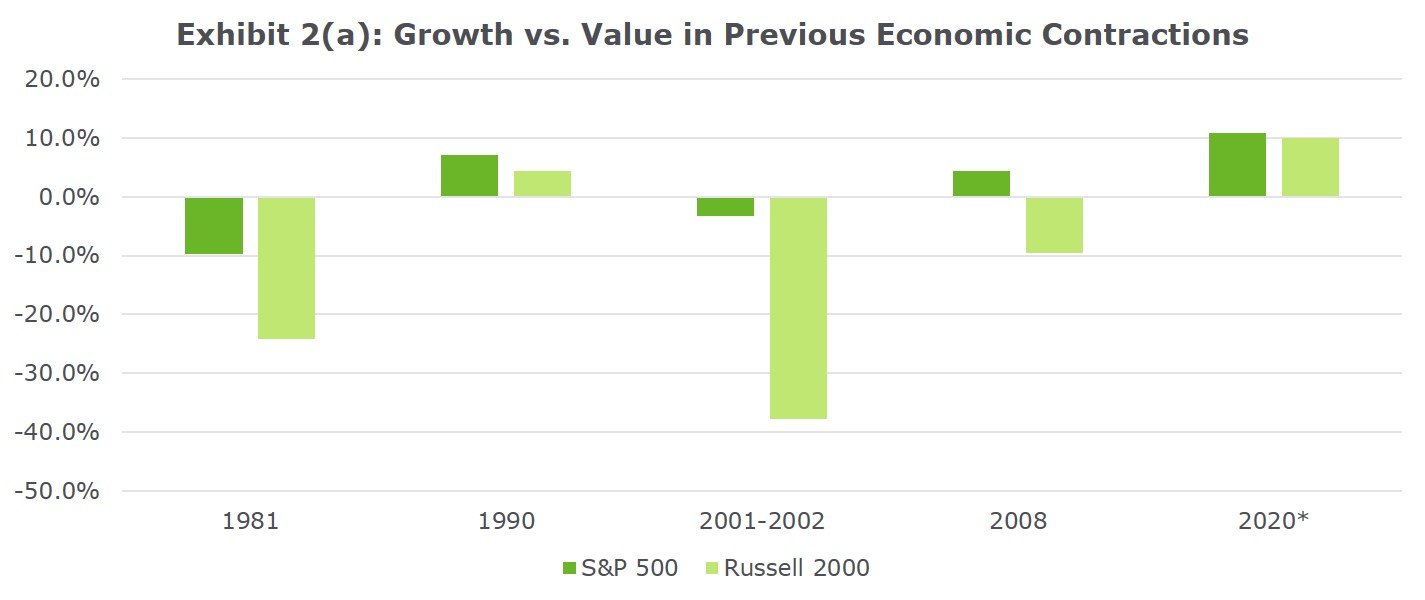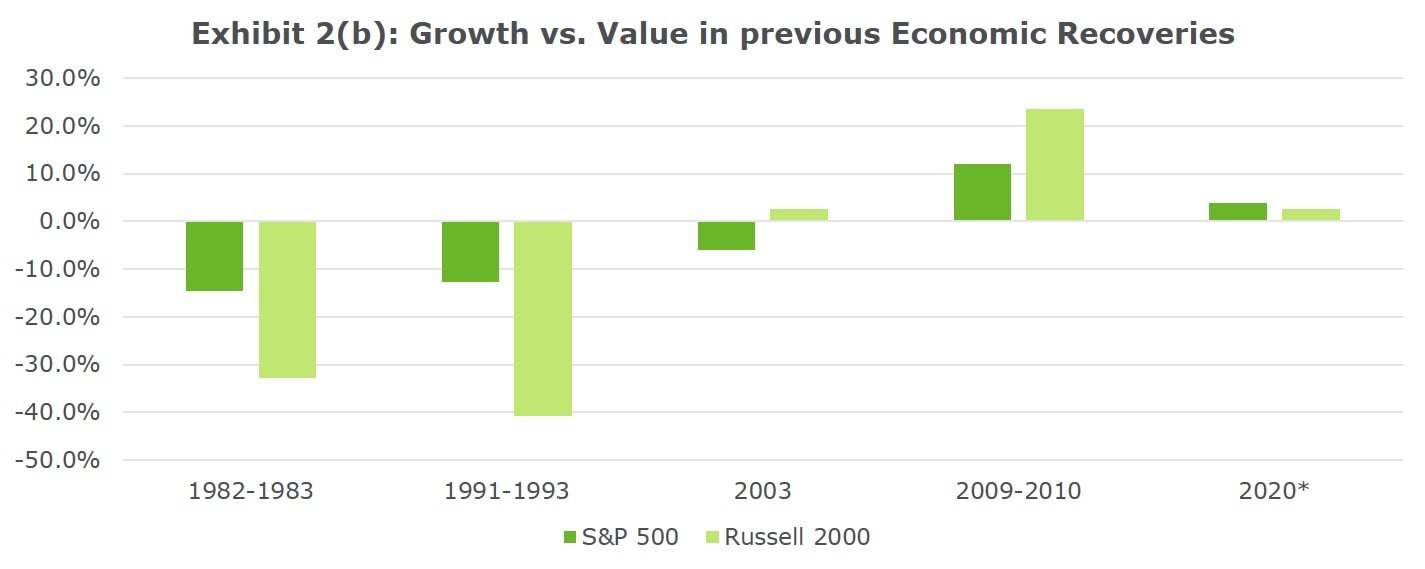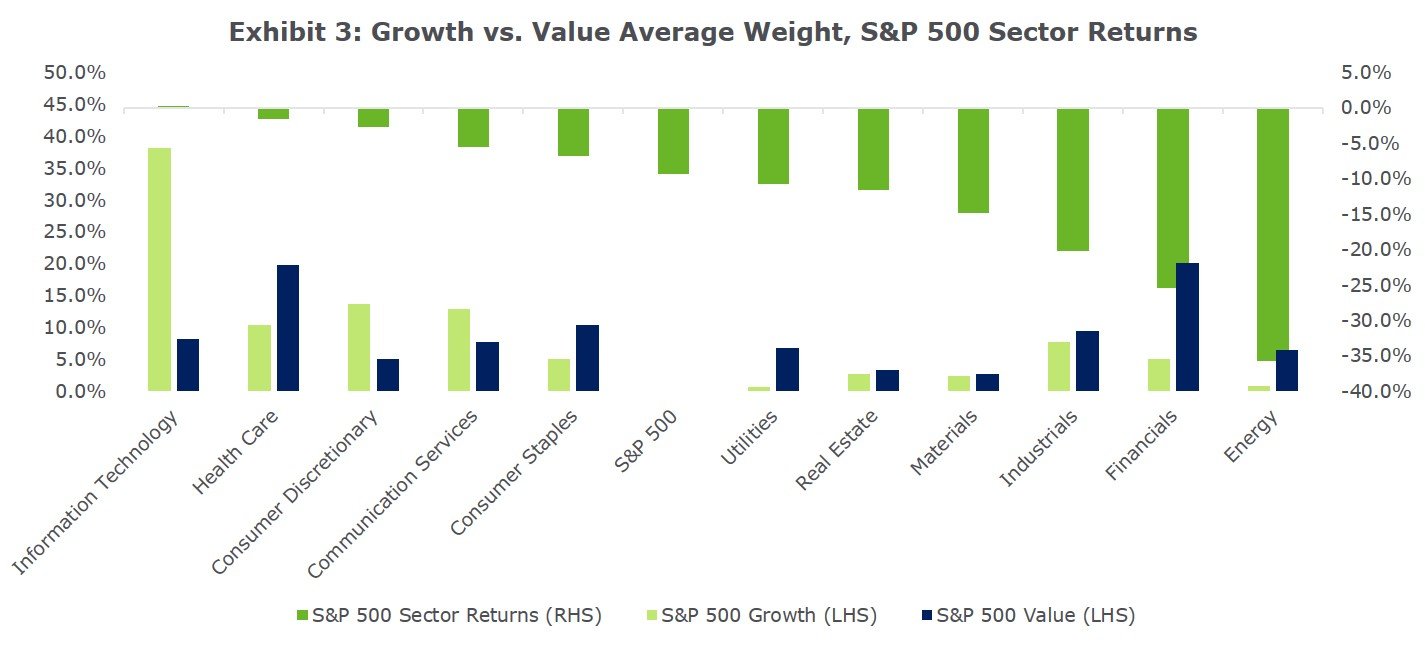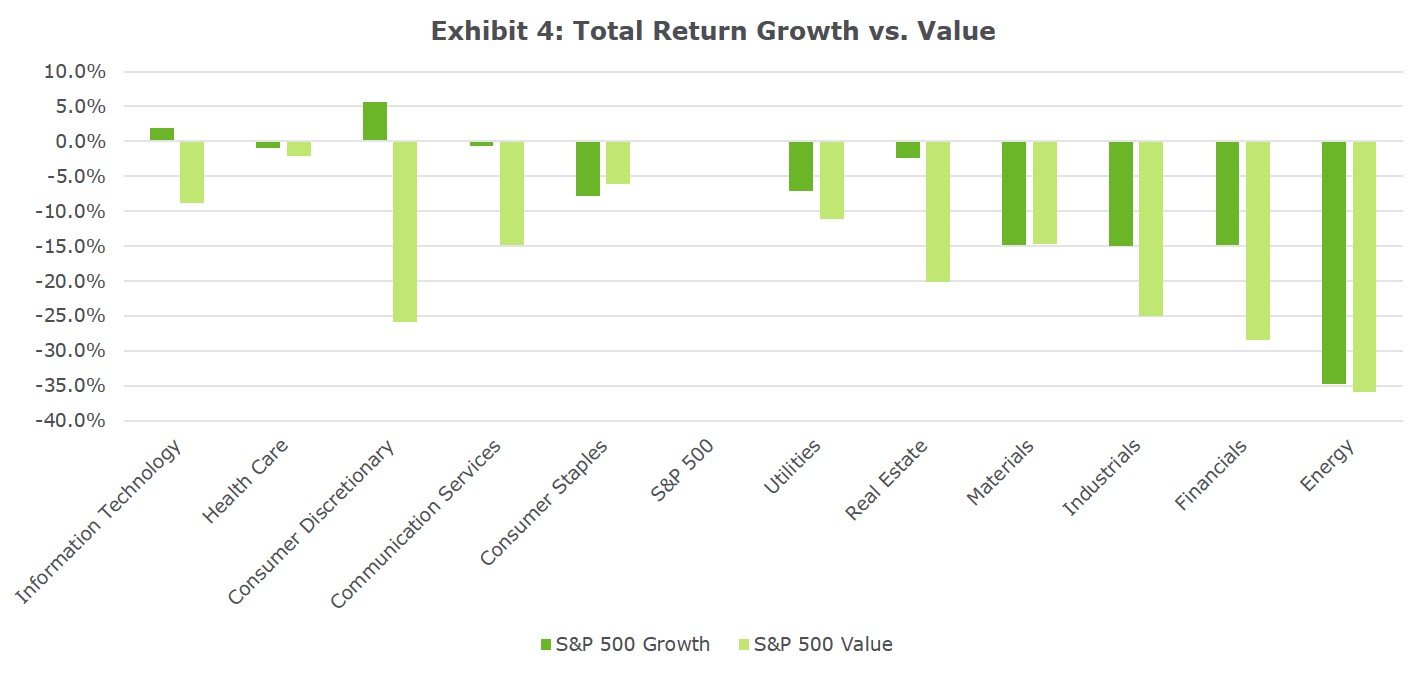Investors in value stocks can’t seem to catch a break.
Ever since the financial crisis toppled the longstanding reign of value stocks over growth equities, value investors have been patiently awaiting a turnaround. However, much to their dismay, this underperformance was more pronounced during the first-quarter market selloff induced by the coronavirus pandemic, with even the subsequent rebound offering little respite. This is especially confounding as conventional wisdom states that value stocks are largely expected to outperform growth equities during recessionary periods (and the ensuing recoveries) as investors shun the excitement of growth stocks in favor of the dependability of value equities.
That said, this downturn has been anything but conventional. Efforts to contain the COVID-19 virus, including harsh restrictions on social interaction and movement, have brought the world’s economies to a standstill with a ferocity and velocity that few were prepared for. At the same time, the pandemic has deepened the reliance of consumers and businesses on technology—a staple in growth portfolios—as large swaths of the population increasingly turn to shopping online, communicating virtually and streaming content during this period of lockdown. (As Microsoft CEO, Satya Nadella, noted in a recent earnings statement, “We’ve seen two years’ worth of digital transformation in two months.”[1]) On the other hand, financials and energy—mainstays in value portfolios—are reeling as banks brace for an uptick in loan defaults and travel restrictions deepen the woes of an already over-supplied oil market.
While this recessionary environment may weigh more heavily on certain sectors on the value spectrum, it could be premature to write off value stocks just yet because we believe portfolios that are balanced and diversified by sector with exposure to both value and growth factors are better positioned to weather short-term distress and deliver long-term investment success. In this blog, the first in a series, we examine the role individual sectors are playing in exacerbating the diverging performance between value and growth investments. In the following weeks, we will explore other significant factors, ranging from capital allocation, evolving business models, to valuation, portfolio construction, and the role of active and passive management, that are also influencing this dynamic. At NEPC, we understand that years of underperformance make it challenging to maintain investment discipline through cycles and, in this series, we hope to provide some useful prescriptions for balancing growth and value exposures within the framework of portfolio construction.
So far this year through April, growth has outperformed value across domestic and global equities; the spread was the widest between the S&P 500 Growth and S&P 500 Value indexes (Exhibit 1). This exhibit also highlights that the dominance of growth has been a global theme over both the short and long term, with value gaining only a slight edge over the long term in emerging market small-cap stocks.
Source: eVestment, data through 4/30/2020
Looking back to prior cycles, small-cap value stood out for a different reason: it was the top performer in three of the four previous contractions (the exception: 1990) (Exhibit 2). In the recovery phase, results have been more mixed, with value and growth taking turns to lead. While it is too early to characterize April 2020 as the beginning of a recovery, growth has bounced back stronger than value in both large- and small-cap equities.
*01/2020 – 03/2020 Source: FactSet, eVestment
*04/2020 Source: FactSet, eVestment
As we mentioned earlier, growth’s outperformance through the first four months of 2020 may be attributed to a sector mismatch in Value and Growth indexes, specifically the overweight to technology and the underweights to financials and energy in the Growth Index relative to the Value Index. On average, during this period, the S&P 500 Growth Index held 51% of its exposure in the information technology and communications services sectors, compared to just 15.9% in the S&P 500 Value Index. To that end, the performance of large-cap technology companies—Facebook, Apple, Amazon, Netflix and Google (the so-called FAANG stocks), and Microsoft—represented approximately one-third of the S&P 500 Growth Index (and 0% in the S&P 500 Value Index) while accounting for 68% of the outperformance of growth relative to value.
Meanwhile, financials constituted 20.1% of the Value Index compared to 5.1% of the Growth Index, while energy stocks averaged 6.5% of value and less than 1% of growth for the first four months this year. However, value did benefit from relative overweight positions in healthcare, consumer staples and utilities – three of the best six sector performers in the S&P 500 Index (Exhibit 3).
Source: FactSet (12/31/2019 – 4/30/2020)
Additionally, the S&P 500 Value Index suffered from the selection effect: value underperformed growth within individual sectors (Exhibit 4). For example, value financials lost 28.4% while growth financials were down 14.9% as banks, which occupy prime place in the Value Index, set aside reserves in anticipation of greater loan defaults. Meanwhile, the consumer discretionary sector was up 5.6% in the Growth Index but declined 25.9% in the Value Index, mainly due to Amazon’s outsized presence in the Growth Index; the ecommerce juggernaut makes up 45% of the Index’s consumer discretionary sector. However, some sectors featured more balanced returns. There was virtually no return differential between value and growth in the healthcare sector, which is weighted more heavily in the Value Index. COVID-19’s impact on the healthcare sector is more nuanced: while overall demand for healthcare is likely to remain stable from pre-pandemic levels, highly profitable elective procedures ground to a halt, resulting in a 2.3% of the 4.8% annualized decline in first quarter GDP.[2]
Source: FactSet (12/31/2019 – 4/30/2020)
Given these sector dynamics, growth’s outperformance relative to value makes intuitive sense. While some changes in consumption patterns may be temporary given the unique circumstances of this pandemic—Netflix acknowledged a demand pull-forward on its first-quarter earnings call—others could signal a permanent shift in some cases. For example, working remotely may be the new normal for many companies and workers, benefitting technology companies that offer products and services supporting video conferencing, cybersecurity and online infrastructure.
While we believe these sector dynamics may persist, potentially widening the chasm between the performance of value and growth, the market’s exuberance for growth stocks has set lofty expectations. If history is any guide, there will likely be a reversion to value at some point. That reversion may happen next month, or it may be years away. Due to the high degree of uncertainty around its timing, we continue to recommend that investors and clients maintain their rebalancing discipline and remain diversified and balanced between value and growth exposures. Also, setting aside labels of “value” or “growth,” we encourage investors to examine their sector exposure at the portfolio and strategy levels to better understand and explain past performance, and to form more accurate forward-looking expectations for their strategies during different market and economic environments. Watch this space for more on this topic.
[1] Axios: Microsoft earnings beat expectations despite coronavirus impact
